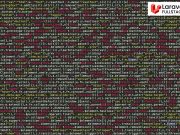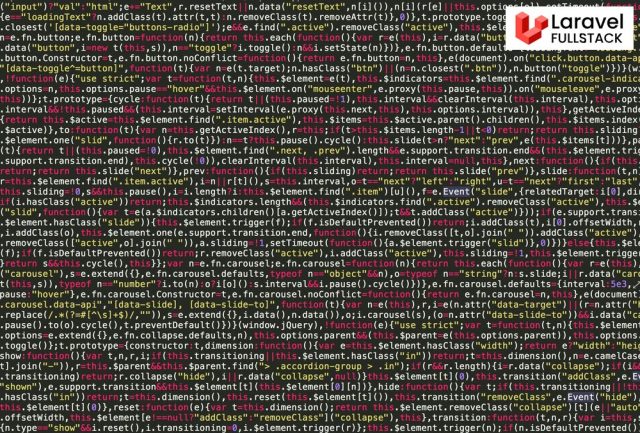Building a Weather Application with Laravel and a Weather API
In today’s digital age, having access to real-time weather information is more important than ever. This article will guide you through creating a weather application using Laravel, a powerful PHP framework, and a Weather API to fetch and display current weather data. Whether you’re a seasoned developer or just starting, this project offers a practical way to enhance your skills and build something useful.
Why Laravel for a Weather App?
Laravel is a popular choice for web application development because of its elegant syntax, robust features, and extensive ecosystem. Its MVC (Model-View-Controller) architecture promotes clean, maintainable code. Laravel also offers features like routing, database management, and templating, which simplify the development process.
Choosing a Weather API
The foundation of our weather app is a reliable Weather API. Several options are available, each with its own pricing, features, and data accuracy. Popular choices include OpenWeatherMap, AccuWeather, and WeatherAPI. For this tutorial, we’ll assume you’ve chosen an API and have obtained an API key. Ensure the API provides the necessary data points (temperature, humidity, wind speed, etc.) for your app.
Setting Up Your Laravel Project
First, make sure you have PHP and Composer installed on your machine. Open your terminal and run the following command to create a new Laravel project:
composer create-project --prefer-dist laravel/laravel weather-app
cd weather-appThis command creates a new Laravel project named “weather-app” and navigates into the project directory.
Creating the Weather Controller
Next, we’ll create a controller to handle the logic for fetching and displaying weather data. Run the following command to generate a new controller:
php artisan make:controller WeatherControllerThis command creates a file named `WeatherController.php` in the `app/Http/Controllers` directory. Open this file and add the following code:
<?php
namespace App\Http\Controllers;
use Illuminate\Http\Request;
use Illuminate\Support\Facades\Http;
class WeatherController extends Controller
{
public function index(Request $request)
{
$city = $request->input('city', 'London'); // Default city
$apiKey = 'YOUR_API_KEY'; // Replace with your actual API key
$apiUrl = "http://api.openweathermap.org/data/2.5/weather?q={$city}&appid={$apiKey}&units=metric";
$response = Http::get($apiUrl);
if ($response->successful()) {
$weatherData = $response->json();
return view('weather', ['weather' => $weatherData, 'city' => $city]);
} else {
return view('weather', ['error' => 'Failed to fetch weather data.']);
}
}
}
Remember to replace `’YOUR_API_KEY’` with your actual API key. This controller defines an `index` method that accepts a city name as input, fetches weather data from the API, and passes it to a view.
Defining the Route
Now, let’s define a route to access our `WeatherController`. Open the `routes/web.php` file and add the following route:
use App\Http\Controllers\WeatherController;
use Illuminate\Support\Facades\Route;
Route::get('/weather', [WeatherController::class, 'index']);This route maps the `/weather` URL to the `index` method of the `WeatherController`.
Creating the Weather View
Next, we need to create a view to display the weather data. Create a file named `weather.blade.php` in the `resources/views` directory and add the following code:
<!DOCTYPE html>
<html lang="en">
<head>
<meta charset="UTF-8">
<meta name="viewport" content="width=device-width, initial-scale=1.0">
<title>Weather App</title>
</head>
<body>
<h1>Weather in {{ $city }}</h1>
<form action="/weather" method="GET">
<label for="city">Enter City:</label>
<input type="text" id="city" name="city">
<button type="submit">Get Weather</button>
</form>
<?php if (isset($weather)) : ?>
<?php if (isset($weather['main'])) : ?>
<p>Temperature: {{ $weather['main']['temp'] }} °C</p>
<p>Humidity: {{ $weather['main']['humidity'] }}%</p>
<p>Description: {{ $weather['weather'][0]['description'] }}</p>
<?php else : ?>
<p>Error: Could not retrieve weather data.</p>
<?php endif; ?>
<?php endif; ?>
<?php if (isset($error)) : ?>
<p style="color: red;">{{ $error }}</p>
<?php endif; ?>
</body>
</html>
This view displays the weather data, including temperature, humidity, and description. It also includes a form that allows users to enter a city name to fetch weather data for that city.
Testing Your Application
Now, start the Laravel development server by running the following command:
php artisan serveOpen your browser and navigate to `http://localhost:8000/weather`. You should see the weather information for London (or the default city you set). You can also enter a different city name in the form to fetch weather data for that city.
Enhancements and Further Development
This is a basic weather application, and there are many ways to enhance it. Here are a few ideas:
- Implement error handling and validation.
- Add support for more weather data, such as wind speed and direction.
- Use a CSS framework like Bootstrap or Tailwind CSS to improve the styling.
- Implement caching to reduce API calls.
- Add a map to show the location of the city.
Finding the Right Talent for Your Laravel Projects
Building a weather app is just one example of what you can achieve with Laravel. If you’re looking to scale your development team and need expert assistance, it’s crucial to find the right talent. Many companies are looking to hire laravel developer to build complex web applications.
For frontend development, especially when dealing with dynamic user interfaces in your weather app, you might consider hiring skilled frontend developers. Some projects might benefit from the expertise of the best react developer to create interactive and engaging interfaces.
Or you may need best vue js developers to create interactive and engaging interfaces.
Building a weather application using Laravel and a Weather API is a great way to learn and practice your web development skills. With Laravel’s powerful features and a reliable Weather API, you can create a useful and informative application that provides real-time weather data to users. Remember to experiment, explore different features, and continuously improve your code to become a more proficient Laravel developer.
Laravel Fullstack is a remote tech resource provider specializing in connecting businesses with top-tier talent, including Laravel developers, React.js and Vue.js experts, Python programmers, agentic AI developers, SEO specialists, and content writers. Visit Laravel Fullstack to explore our services and find the perfect addition to your team.














